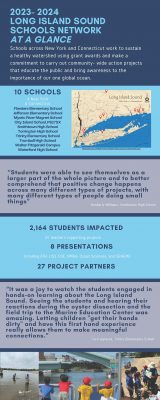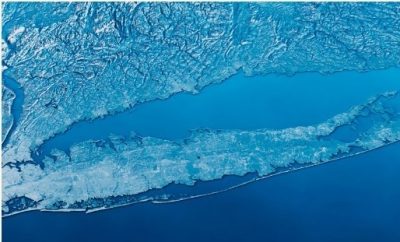
Elementary, middle and high school students, teachers and the communities of 10 public schools in urban and suburban areas will comprise the new Long Island Sound Schools network, committing to the protection of local watersheds, the Sound and our one global ocean.
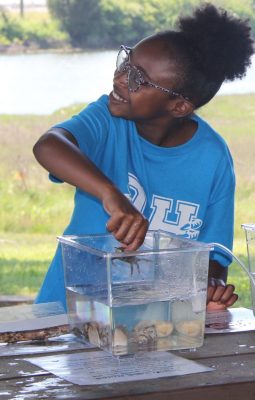
 Applications for the 2025-26 Long Island Sound Schools Network is now open.
Applications for the 2025-26 Long Island Sound Schools Network is now open.
Is your school located in the Long Island Sound watershed? If so, consider applying to become a Long Island Sound School. Learn more here or listen to a recording of the Sept. 17 information session using passcode: 5W.A&Mc+ All application, project and resources for the LISS Network can be found by clicking here or on the green box in the upper right corner of this page.
A direct link to the application form can be found by clicking here.
A pdf of the 2025-2026 Long Island Sound Schools Network flier can be found by clicking here.
With funding from the U.S. Environmental Protection Agency’s Long Island Sound Study and facilitated by Connecticut Sea Grant and Mercy University, the program supports schools that implement a school or community-based project and create a plan to increase ocean literacy by engaging students, families, and the public.
All K-12 schools located within the Long Island Sound watershed in New York and Connecticut are eligible, from inland areas with waterways that flow into the estuary to shoreline communities. Program funding will provide stipends for lead teachers at each school and up to $5,000 per school to implement projects. Your school will also have access to a network of educators, connections with scientists, community organizations and stewardship sites, and possible travel funds for conference presentations.
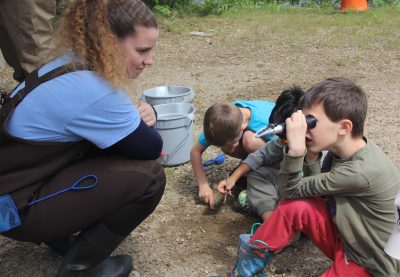
We have many resources available to help you prepare your application. First, we have created a guide to writing a strong application, including hints on what constitutes an excellent action project. You’ll need to select your lead teacher team and prepare and justify your budget, using our budget template. We also have an example budget to use as a guide. Please review the rubric, to know how the applications will be evaluated, and then you are ready to submit through the application form.
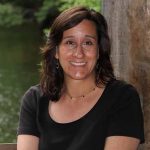
“The Long Island Sound Schools network builds on more than 20 years of success with the Long Island Sound Mentor Teacher program,” said Diana Payne, CT Sea Grant education coordinator. “It’s the next logical step—from fostering educators to incorporate Long Island Sound into their curriculum at the classroom level and expanding it to the school and community level.”
The program is modeled on the National Atmospheric and Oceanographic Administration’s (NOAA) Ocean Guardian Schools and the international Blue Schools network.

“This project is a wonderful opportunity for school communities to strengthen their connection to Long Island Sound and our global ocean, inspiring the next generation of ocean stewards,” said Meghan Marrero, professor of secondary science education and co-director of the Center for STEM (Science, Technology, Engineering and Mathematics) Education at Mercy University in Dobbs Ferry, N.Y. Payne and Marrero are co-leaders of the project.
For information about the program, contact Diana Payne at: diana.payne@uconn.edu; Meghan Marrero at: mmarrero3@mercy.edu.
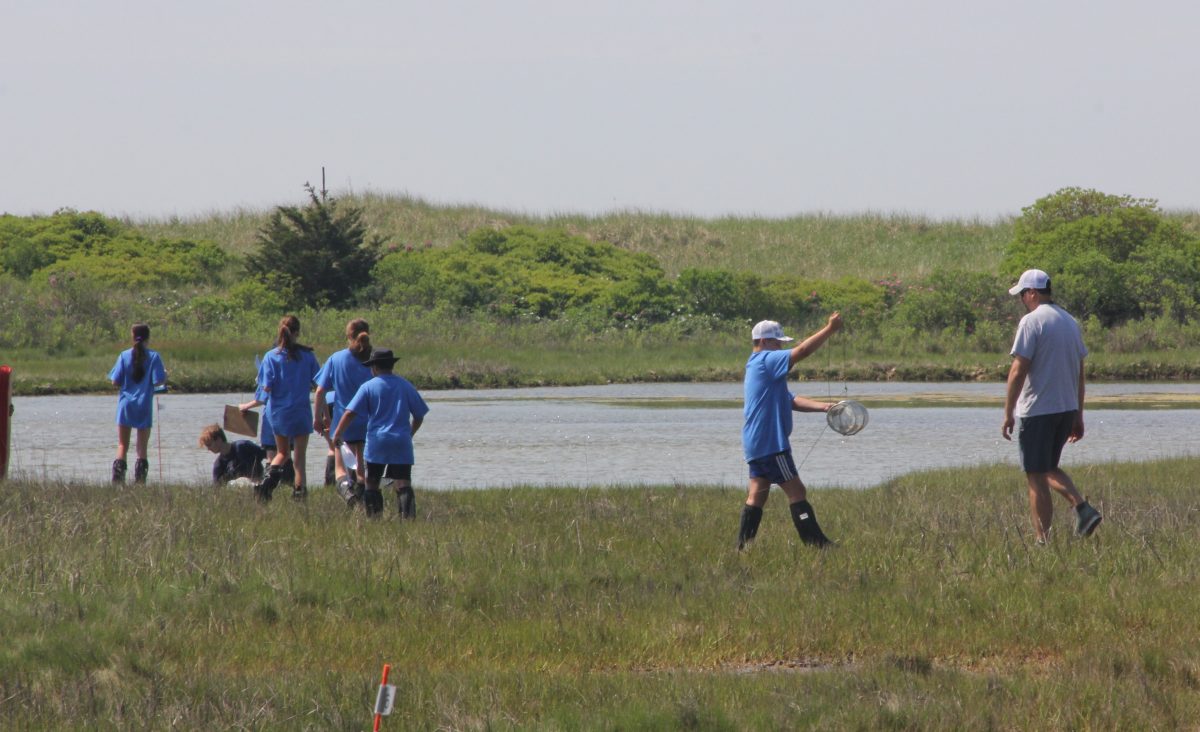

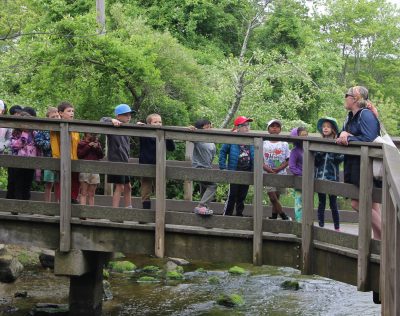
More information:
2025 Long Island Sound Schools
Connecticut:
- House of Arts and Letters Science Academy, New Britain
- The Sound School, New Haven
- Thomaston High School
- Walter Fitzgerald Campus, Southport
New York:
- The Bronx Lab School for Historical Discovery PS 583
- Dr. Daniel Hale Williams MS 180, Bronx
- George M. Davis Jr. Elementary School, New Rochelle
- Susan E. Wagner High School, Staten Island
- Urban Assembly Institute of Math and Science for Young Women, Brooklyn
- Urban Institute of Mathematics, Bronx
